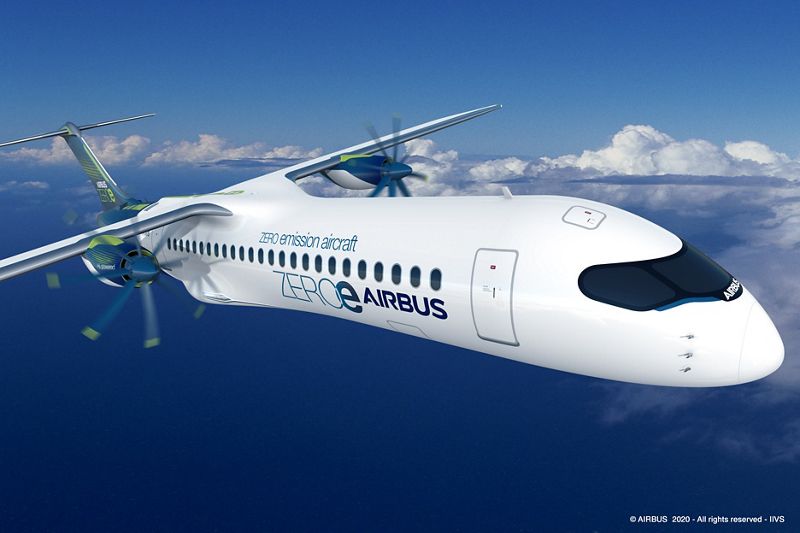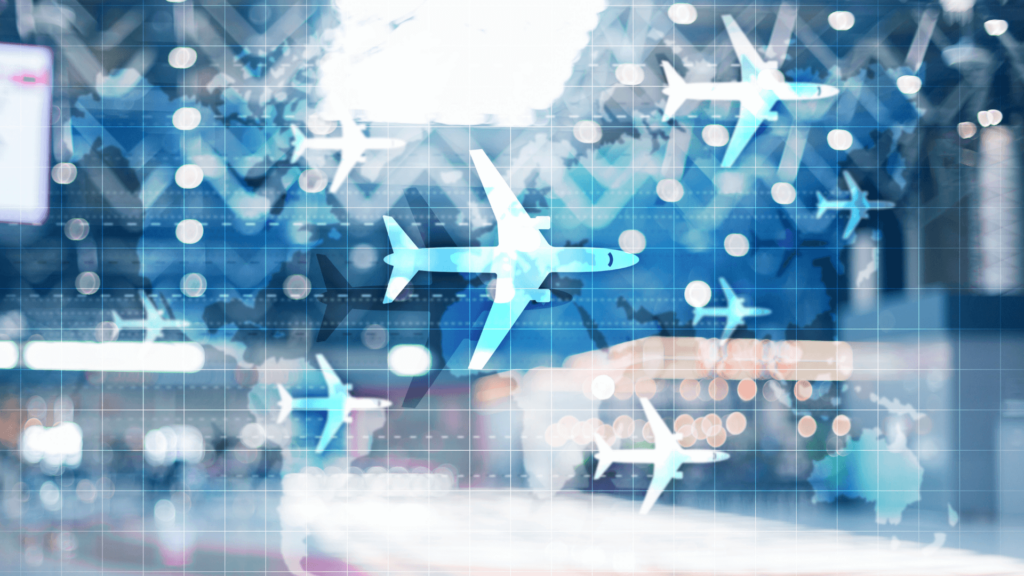Getting to zero-emission aviation is a system-level challenge
In this opinion piece Ron van Manen, Head of Strategic Development, Clean Sky 2 Joint Undertaking, argues that rapid and ambitious investment in innovative and disruptive research across a broad range of technology streams will be needed in order for Europe to lead the global transformation towards climate-neutral aviation.
This article by Ron van Manen, Head of Strategic Development, Clean Sky 2 Joint Undertaking, originally appeared in the European Transport Regulation Observer ‘Navigating Towards the Decarbonisation of European Aviation’ (November, 2021).
The journey towards climate-neutral aviation must be approached from 360 degrees.
Aviation has an impressive track record when it comes to efficiency – it has reduced the amount of fuel burned per revenue passenger kilometre (RPK) by no less than 97.5% since the dawn of post-war international aviation.
However, the aviation sector quadrupled in size in the thirty years up to 2019. That meant that even though each new generation of aircraft was more energy-efficient than ever before, net emissions continued to rise, “only doubling” within the same timeframe.
But this is no longer acceptable. If we want to prevent the worst of the IPCC’s climate scenarios, then driving emissions down to absolute zero is the only acceptable route to take.
That’s no easy challenge, especially as aviation is one of the hardest sectors to decarbonise. The energy needed to take off and fly, and distances flown are of a completely different order of magnitude compared to most ground transport. Hence solutions on the ground such as ‘battery electric vehicles’ will play only a very modest role in aviation.
Clean Sky Joint Undertaking has been at the forefront of aviation research in Europe for the past 14 years, bringing together industry, academia, SMEs and research centres to deliver cutting-edge innovations. We’ve investigated a wide range of technologies, from new propulsion options, including electrification, to novel aircraft shapes and innovative systems. The Clean Sky programmes are on their way to enabling a 20 to 30% efficiency improvement over the best aircraft commercially available today. But ultimately, that alone will not be enough either. We need to look beyond the fuel or energy efficiency and re-imagine the full system, including the energy onboard, and develop approaches that are carbon-neutral.
Sustainable aviation fuels, or SAFs as they are known, are one stepping stone along the road to low-carbon flight. Essentially, SAFs are still kerosene, though produced in a different way. They are referred to as a ‘drop-in’ fuel because they can essentially be mixed in with or swapped for kerosene, with only very modest revisions in aircraft fuel systems. There is no need to alter the aircraft design or the refuelling systems at the airports. Proponents of SAFs claim that they are low ‘net carbon’ because fossil fuels are not burnt. Instead, the fuel is created by combining CO2 from plants or other sources with hydrogen to make kerosene. At the end of the day, there is still a release of carbon into the atmosphere, so this method is not emission-free. In fact, its ‘net emissions’ reduction only occurs when the CO2 released is recaptured from the atmosphere.
In industrial-scale refineries, the CO2 used for the production of these SAF often comes from point sources – bio-waste, steel mills, refineries, cement factories. What is often forgotten is that these emissions could have been captured and sequestered. So re-using the CO2 does not really provide a full net reduction of emissions: at best, these net reductions are ‘shared’ between the source and the user of the fuels, i.e. aviation.
The only way to make SAFs truly ‘net zero’ is if we can perfect Direct Air Capture. This involves capturing the CO2 directly from the atmosphere, which is later released back into the air when the SAFs are burned as fuel. But this methodology will take decades to mature and become cost-effective. And the energy required to produce SAF in this manner is almost threefold what would be needed to produce, liquefy and distribute hydrogen and an energy source.
As a consequence, in the new Clean Aviation Partnership, developing hydrogen as on-board energy source or ‘fuel’ is going to be a key area of focus. The new Partnership is going to focus on three main thrusts as priority areas moving forwards. They are:
- Hybrid electric and full electric regional aircraft concepts
- Ultra-efficient short and medium-range aircraft architectures
- Disruptive technologies to enable hydrogen-powered aircraft.
A massive 2/3 of all emissions come from flights that are less than 4000 km in length, and more than 80% of the aircraft that travel those routes are single-aisle or regional aircraft. Notwithstanding regular updates, the basic designs are from the 1960s and 1980s, meaning now is the time to re-imagine short- to medium-range aircraft and bring ‘clean sheet’ solutions to the market.
Clean Aviation will aim for a revolutionary leap in these technologies. Rather than continuing a step-by-step process, we need to make drastic, disruptive breakthroughs. We must take a skip-a-generation leap in technology before 2030 – and we see that energy efficiency gains of 30-50% are possible.
Massive change is required in the aviation sector to make climate neutrality a reality. The complexity of the aviation system and of flight itself means that we will need system-wide transformation, encompassing everything from fuels and aircraft to airport infrastructure, down to the routes and networks that we fly.
Europe now has a unique opportunity to lead the global transformation towards climate-neutral aviation. Rapid, ambitious investment in innovative and disruptive research across a broad range of technology streams will be needed.
With the support of all aviation sector players – industry, universities, SMEs and research centres – as well as public policy and financial instruments to fuel this journey, decarbonisation by 2050 can be a reality. There is no time to lose – the time to start was yesterday.




